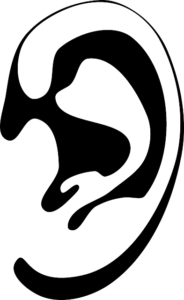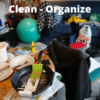Certain lifestyle Factors Cause Excessive Earwax.
Cerumen impaction, also known as earwax blockage, occurs when your body produces too much earwax or when existing earwax is forced too far into the ear canal.
In some cases, you may find yourself unable to hear out of the affected ear.
However, this usually only lasts until the extra earwax is removed. In most circumstances, at-home care is sufficient. A doctor, on the other hand, can help clean and unclog an earwax blockage.
Although earwax is vital for keeping the ears clean and healthy, it can sometimes hinder hearing.
Earwax buildup can result in hearing loss, physical pain, tinnitus, ear infections, and other problems.
While you may not always be able to regulate the amount of earwax you produce (the majority is inherited), you can control other daily habits that contribute to the problem.
Earwax obstruction causes
Earwax is natural to have in your ears. Earwax protects the inner ear from contaminants like bacteria and dust. Earwax usually works its way out of the ear gradually, so there is no blockage.
Clogging can occur if you push earwax into your ear too deeply or if you naturally produce too much earwax.
Here are three habits that contribute to a buildup of earwax.
Use headphones and earplugs on a daily basis.
A contact stimulus, as described by hearing care professionals, is routinely used to induce earwax formation.
Headphones, earplugs, and even hearing aids that contact and massage the ears are the most typical culprits.
Earwax production increases as a kind of self-defense when you are in pain or unwell.
Assume you notice yourself producing more earwax. Reduce the use of products that come into touch with your ears. If that isn't possible (as with hearing aids), make sure they're clean and bacteria-free.
Incorrect or excessive cleaning procedures
You may believe that inserting cotton swabs and other items into your ears can remove earwax.
These have the potential to irritate and damage skin that is already sensitive. This will accelerate the development of earwax.
Earwax and other particles are also forced deeper into the ear canal, potentially injuring the eardrum.
Aside from the manner, the frequency with which you clean your ears can also lead to an excessive buildup of earwax. Even mild cleansers such as hydrogen peroxide or over-the-counter treatments may remove too much earwax, leaving the skin dry and irritated.
If you notice this effect, limit your cleaning to once or twice a month. The body responds by manufacturing even more earwax to protect and cover the ear canal, and you're right back where you started.
Pollutants and irritants in the environment.
Pollen counts grow at various times of the year, affecting your sinuses and ears. Perhaps you live near a polluted company or work in a dusty environment.
All of these small particles may irritate your ears and increase the production of earwax. If you can't control your surroundings, protect yourself from it. Wear hats, use hearing protection, and spend less time outside when pollen and pollution levels are high.
Symptoms of earwax blockage
One of the most prevalent symptoms of earwax obstruction is hearing loss in the affected ear. Don't worry; your hearing will return once the earwax blockage has been removed.
Other common symptoms include:
a feeling of fullness in the ear
Earache
Ringing, buzzing, or other strange ear sounds
As a result, because both ears are unlikely to be blocked at the same time, most persons only experience these symptoms in one ear.
Consult a doctor to rule out any other probable causes of the same symptoms in both ears.
Your doctor will also inspect your ear with lighted equipment known as an otoscope to determine if earwax is causing your symptoms.
Treatment for earwax congestion
Your doctor may treat your earwax blockage in the office or show you how to do it at home. If your doctor feels that your eardrum is damaged, he or she will almost certainly need to remove the earwax to safeguard this crucial and delicate structure.
At-home care
A variety of therapies, including aspirin, can be used at home to soften and eliminate earwax.
Water with minerals
Glycerin
Oil for infants
Debrox, which contains carbamide peroxide, or another over-the-counter earwax removal
To soften the earwax, insert a few drops in the ear canal with a pipette. For the next few days, take it twice a day. The earwax should fall out within a few days of being softened.
Another option for at-home care is rinsing. Half-fill a rubber ball syringe with warm water, tilt your head and gently squeeze the syringe.
Allow the water to enter your ear canal by lifting your earlobe gently. This step will very certainly need to be repeated multiple times.
Dry your ear completely after attempting to eliminate the earwax obstruction.
More information: Microsuction Edgware
In the doctor's waiting room
If these methods fail, your specialist may need to vacuum your ear, use a curette, or utilize other equipment to remove the clog.
What to expect in the long run.
There is no guarantee that earwax blockage will not develop again. If your body produces an excessive amount of earwax, you may encounter this issue several times throughout your life.
Earwax obstruction is only a temporary issue, and the symptoms should go away once the problem is resolved.
When the earwax is obstructed, some individuals experience fever, ear discharge, and acute ear pain. If you notice these unusual symptoms, you should see your doctor as soon as possible to get the earwax removed.
You can't always control how much earwax you have, but you can keep your ears clean, hear well, and avoid infections by avoiding these and other lifestyle choices that induce excessive production.
Brought To You By – Microsuction Edgware
The post Certain lifestyle Factors Cause Excessive Earwax. appeared first on https://gqcentral.co.uk




